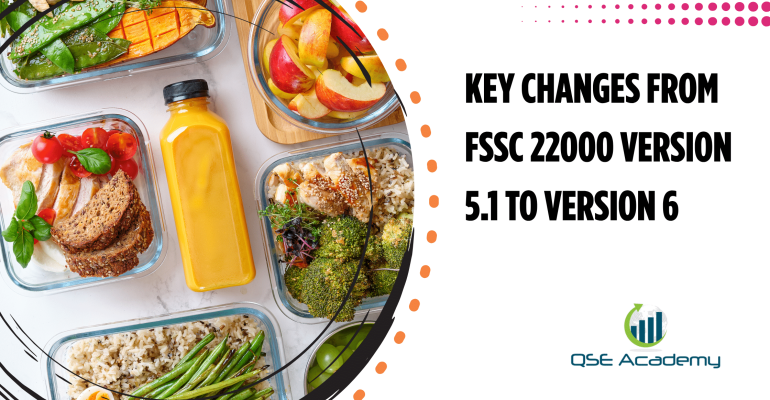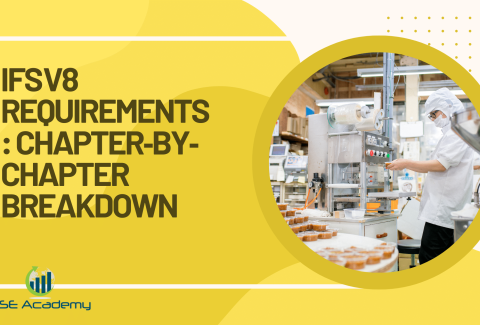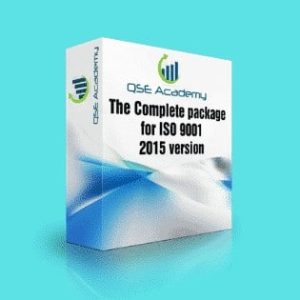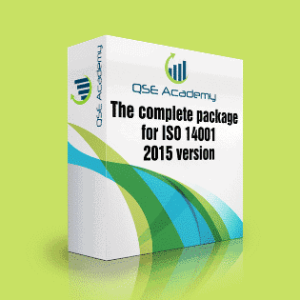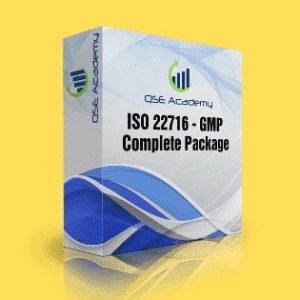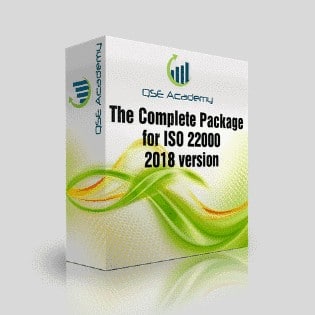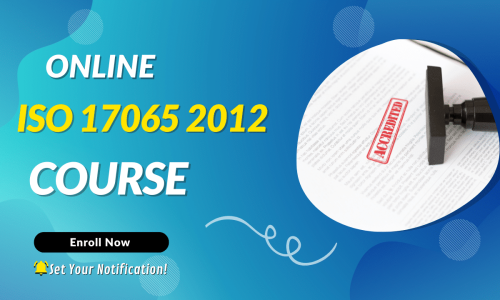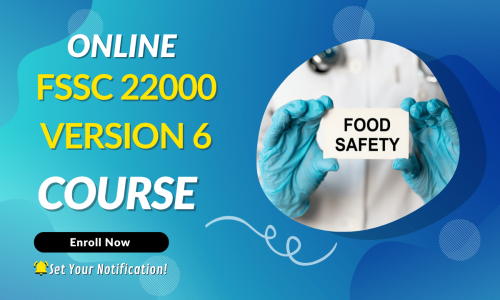Key Changes from FSSC 22000 Version 5.1 to Version 6
Last Updated on October 13, 2025 by Hafsa J.
Key Changes from FSSC 22000 Version 5.1 to Version 6
Let’s be real—when FSSC 22000 updates its standards, it’s not just a minor tweak. These changes affect how you run your food safety system every single day. And if you’re still operating under Version 5.1, you’re going to need to catch up—fast.
I’ve spent over ten years helping food businesses—ranging from family-run bakeries to global processors—navigate certification updates just like this one. Every time a new version rolls out, I see the same thing: confusion, last-minute scrambles, and sometimes, costly non-conformities that could’ve been avoided with a little prep.
That’s why I wrote this article.
I want to give you a straightforward breakdown of what’s new in Version 6, how it affects your daily operations, and what steps you can take right now to stay ahead. No fluff. No guesswork. Just the key changes and how to implement them—with real-world insights based on what’s actually worked for my clients.
By the end of this post, you’ll know:
-
Which requirements have been added, removed, or completely reworked
-
How to shift your systems to meet Version 6 expectations
-
Common mistakes to avoid (because trust me, they happen more often than you think)
Ready? Let’s dive into the key updates and what they mean for your team.
Food Safety and Quality Culture — Now It’s Non-Negotiable
Here’s what I’ve noticed—”culture” used to be more of a buzzword in audits. Something you talked about, but didn’t really need to prove. That’s changed.
In Version 6, FSSC makes it clear: you must not only promote a food safety and quality culture, you also need to document it, measure it, and show leadership involvement. That includes communication strategies, behavioral expectations, and real feedback mechanisms.
In my experience, the companies that already had informal efforts—like daily toolbox talks or internal shout-outs for safety wins—are in a great position. We just helped a beverage manufacturer turn those habits into a structured culture program, complete with employee surveys, internal audits focused on behavior, and manager accountability metrics. That’s exactly the kind of thing FSSC wants to see.
Codex HACCP Updates Are Now Front and Center
Let’s talk HACCP. If you haven’t updated your approach based on the latest Codex revision, now’s the time.
Version 6 integrates the 2020 Codex HACCP changes, and this is more than a checkbox. The updates include clearer guidance on categorizing hazards (chemical, biological, physical, etc.), validation steps, and expanded prerequisite program expectations.
One of our clients—a poultry processing plant—had to redo their hazard analysis completely. Their original plan bundled too many risks under one CCP. Under the new guidance, we worked with their team to break those down into more specific categories and establish clear control measures. The feedback from their auditor? “Best HACCP clarity we’ve seen from this site.”
Equipment Management Just Got a Lot More Serious
Here’s something that’s caught a few companies off guard—equipment validation is now getting a lot more attention.
Under Version 6, organizations are expected to validate that new or modified equipment functions as intended before use. This includes installation verification, sanitation validation, and documented trials.
A food packaging client I worked with recently had to retrofit their equipment commissioning process. We built a validation checklist that tied directly to food safety outcomes—think microbial swabbing post-cleaning and measuring temperature stability. It wasn’t a huge lift, but it made a big difference during their audit.
Tackling Food Loss and Waste Is Now a Must
This one surprised a lot of people. FSSC 22000 is now requiring documented food loss and waste management strategies.
It’s not about hitting zero waste overnight. It’s about showing that you’re actively tracking, analyzing, and improving. Whether that’s portion control, spoilage reduction, or donation programs—you’ve got to show the plan and progress.
One of our bakery clients started logging their daily waste manually in Excel. Within a month, they realized they were losing hundreds of dollars a week on overproduction. That awareness led to smarter batch planning and a local food bank partnership. It’s not just compliance—it’s good business.
Allergen Management and Environmental Monitoring Are Tighter Than Ever
Allergens have always been a big deal—but now, the bar is higher.
Version 6 demands stronger allergen risk assessments and clearer validation of environmental monitoring programs. That includes documented zoning strategies, swab schedules, and verification of cleaning effectiveness.
In one facility we supported, they were already doing the swabs, but not trending the data. Once we built a simple dashboard to show positive hits over time, their team could adjust cleaning cycles more strategically—and auditors loved the visibility.
The Transition Timeline — Don’t Leave This Too Late
Let’s not sugarcoat it—if you wait until your next audit to deal with this, you’re going to feel the pressure.
Here’s what you need to know:
-
Version 6 audits became mandatory in April 2024
-
Certificates to Version 5.1 will no longer be valid after March 31, 2025
-
The sooner you align, the smoother your next audit will go
We recommend starting with a gap analysis. One client of ours did this six months ahead of their recertification and uncovered three major nonconformities they were able to fix—well before audit day.
Pro Tips from the Field
Tip 1: Start with a gap analysis—but don’t do it alone.
In my experience, the best transition plans come from involving a cross-functional team. Get your QA lead, operations supervisor, maintenance manager, and even procurement involved in your Version 6 review. Why? Because these updates touch everything from supplier approvals to cleaning schedules. When everyone’s at the table early, nothing gets missed—and implementation moves faster.
Tip 2: Track food waste before you even figure out how to reduce it.
This one’s simple but powerful. Don’t wait to build a perfect solution. Just start logging what you throw away and why. One client used a whiteboard and tally marks next to their production line. Within two weeks, they spotted a recurring overrun on one product and adjusted their fill weights. Easy win, documented improvement.
Tip 3: Use “culture” metrics you already have.
A lot of teams panic when asked how they measure food safety culture. But in many cases, the data’s already there—you’re just not framing it that way. Attendance at safety meetings, participation in internal audits, reporting of near-misses, employee suggestions—these all reflect culture. Pull those together and you’ve got a solid foundation for your culture plan.
Tip 4: Treat equipment validation like a mini project.
Every new piece of equipment should come with a short checklist: was it installed as planned, cleaned effectively, and tested under real conditions? Keep that checklist simple and repeatable. We helped one client set this up as a laminated sheet attached to the equipment. It saved time and showed auditors the validation steps were being followed consistently.
Tip 5: Visuals help communicate changes internally.
Version 6 comes with a lot of nuance, and not everyone has time to read a 100-page standard. Create one-page summaries for each major change and pin them in high-traffic areas—like break rooms or sanitation stations. People engage more with clear visuals and bullet points than long memos.
Common Mistakes to Avoid
Thinking it’s just a document update
I can’t tell you how many companies assume they’ll be fine by just updating a few procedures. Version 6 digs deeper—it’s not just about rewriting; it’s about rethinking your approach to culture, risk, and even waste. If you treat it like a simple revision, you’re setting yourself up for trouble during your next audit.
Not training the team on what’s actually changed
Here’s the thing—your frontline staff doesn’t need to memorize the entire standard. But they do need to understand how their role is affected. We worked with a food processor who skipped this step… and ended up with several major non-conformities during their audit because operators couldn’t explain new allergen controls. A 30-minute briefing could’ve saved them months of corrective action work.
Waiting too long to start
This is a big one. Some companies delay the transition until their audit is just around the corner. That’s a high-stress, high-risk move. Changes like cultural assessments or waste tracking take time to show meaningful results—and auditors are looking for evidence over time, not last-minute fixes.
Frequently Asked Questions
Q: Do I need to retrain everyone on Version 6?
A: Not necessarily everyone—but definitely those whose roles are impacted. That usually includes QA, food safety teams, operations leads, sanitation, and sometimes HR. Tailor the training so it’s role-specific and practical.
Q: We already have a good culture—do we still need documentation?
A: Yes. Even if your culture is strong, FSSC 22000 now requires proof that it’s being managed, monitored, and improved. Think surveys, KPIs, feedback loops—something tangible that shows your commitment is more than just verbal.
Q: Can we wait until our next surveillance audit to start this?
A: Technically, yes—but that’s risky. If your next audit is after March 2025 and you haven’t implemented Version 6 by then, your certification could be at risk. The smart move? Start now, identify gaps, and build a realistic transition plan.
What to Do Now
So, here’s the bottom line:
FSSC 22000 Version 6 isn’t just an upgrade—it’s a shift in mindset. From food safety culture to Codex alignment, from equipment validation to waste reduction, these changes are designed to make your system more proactive, more measurable, and more integrated into everyday operations.
And yes, it might seem like a lot on paper—but it’s entirely manageable with the right approach. I’ve helped companies large and small make this shift successfully. The ones who do it best aren’t the ones with the biggest budgets—they’re the ones who start early, communicate clearly, and build momentum with small, practical steps.
If you’ve read this far, you’re already on the right track. You know what’s changed, why it matters, and how to begin closing the gap between where you are and where you need to be.
Need a little help getting started?
You can download our free FSSC 22000 Version 6 Gap Analysis Checklist, or visit QSEAcademy.com to book a consultation with our team. We’ll walk you through it, step-by-step, with a plan that actually fits your business.
Let’s get your system ready for the next audit—without the last-minute scramble.
Whether it’s ISO 9001, ISO 22000, or the cosmetics-focused ISO 22716, I’ve spent my career I’m not here to call myself an expert—I prefer “enthusiast” because I truly love what I do. When I’m not writing about standards, you’ll probably find me playing Piano 🎹, connecting with people, or diving into my next big project💫. I’m an engineer specialized in the food and agricultural industry
make ISO standards less intimidating and more approachable for everyone.
turning complex jargon into clear, actionable steps that businesses can actually use.
There’s something incredibly rewarding about helping people navigate food safety and quality management systems
in a way that feels simple, practical, and even enjoyable.
I have a Master’s in QHSE management and over 12 years of experience as a Quality Manager
I’ve helped more than 15 companies implement ISO 9001, ISO 22000, ISO 22716, GMP, and other standards
My clients include food producers, cosmetics manufacturers, laboratories, and service companies
I believe quality systems should be simple, useful, and efficient.

